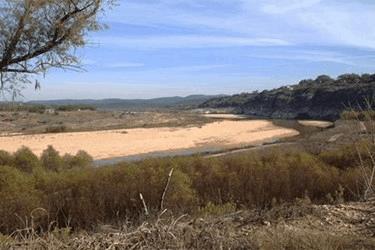New Guide Available To Help Water Utilities Handle Drought

By Susan Butler and William McMillin, CH2M
Extreme weather events can wreak havoc on utilities. Whether getting too much water at once, resulting in floods, or not getting enough, resulting in drought, the availability of water is unpredictable at times. Therefore, making sure utilities are prepared is the first step to managing these situations.
While droughts tend to develop gradually, the devastation that they can cause can have long-term impacts on affected communities and on a water utility’s ability to operate.
Recognizing the need for water utilities to respond to immediate water supply threats, withstand drought impacts and recovery quickly, the United States Environmental Protection Agency (EPA) recently released a Drought Response and Recovery Guide for Water Utilities. The Guide provides worksheets, best practices, videos and key resources for responding to drought emergencies and building long-term resilience. The Guide is broken down into four sections, including:
- Staffing, response plans and funding
- Water supply and demand management
- Communication and partnerships
- Case studies and videos
CH2M has worked with numerous water utilities around the world to make them more resilient in the aftermath of extreme weather events and natural disasters. Leveraging our experience with integrated water planning and drought response, we provided technical assistance to the EPA’s Water Security Division to develop this Guide, as well as a Flood Resilience Guide to help small and mid-size drinking water and wastewater utilities become more resilient to flooding. (Read the blog, “Investing to make water and wastewater utilities more resilient,” by CH2M’s William McMillin and Matt Killam to learn more about the Flood Guide). These Guides are intended to prepare water utilities and give them the tools they need to be successful in mitigating and recovering from natural disasters.
This newest Guide specifically, geared for small and medium-sized utilizes, helps utilities to become drought-resilient by providing information on how to take action to protect human health and the environment, while maintaining service to its customers during drought; manage decreases in water supply, increases in water demand and changes in water quality; as well as plan for future changes in weather and climate patterns that can reduce water supply.
Whether your utility is experiencing a drought or you just want to ensure that you are prepared in the event a future drought occurs, download a copy of the Guide and learn effective ways to increase your utility’s resilience to drought.
During her 29 years of serving public and private entities, Susan Butler has gained broad experience in water resources, conservation and drought planning, as well as utility management. Presenting complex information to a variety of audiences is a hallmark of Susan’s work. Prior to her service at CH2M, where she’s worked for the past 11 years helping communities and businesses across the country plan and implement water conservation and resiliency programs, Susan served as the assistant public works director for Leon Valley, Texas, founding one of the first comprehensive water conservation programs in Central Texas, including water loss evaluations and training for the utility operations. While water resources and conservation director for the San Antonio Water System (SAWS), she led the team to establish conservation measures as well as plan and implement a diverse portfolio of water supply projects. Susan’s career-long passion and commitment to effectively shape the nation’s water management strategies are further demonstrated in her continued involvement on statewide planning and legislative committees and water planning. Susan is a frequent invited speaker at state and national conferences and has led instructional classes at area high schools, colleges and community groups.
William McMillin is CH2M’s Deputy Global Technology Leader for Water Resilience and East Regional Technology Leader for Integrated Water Resource Management. He has over 27 years of experience in Water Resources and Ecosystem Management, Conveyance and Storage Infrastructure, and Drinking Water and Wastewater Infrastructure. Bill specializes in Wet Weather Management and Climate Risk & Resilience and is a contributing author of the following publications: USEPA’s Flood Resilience Guide (2014), Drought Response and Recovery Guide (2016)and Combined Sewer Overflows—Guidance for Nine Minimum Controls (1995); NACWA/WERF Collaborative Water Quality Solutions: Exploring Use Attainability Analyses (2006); and, WEF’s Guide to Managing Peak Wet Weather Flows (2006).
